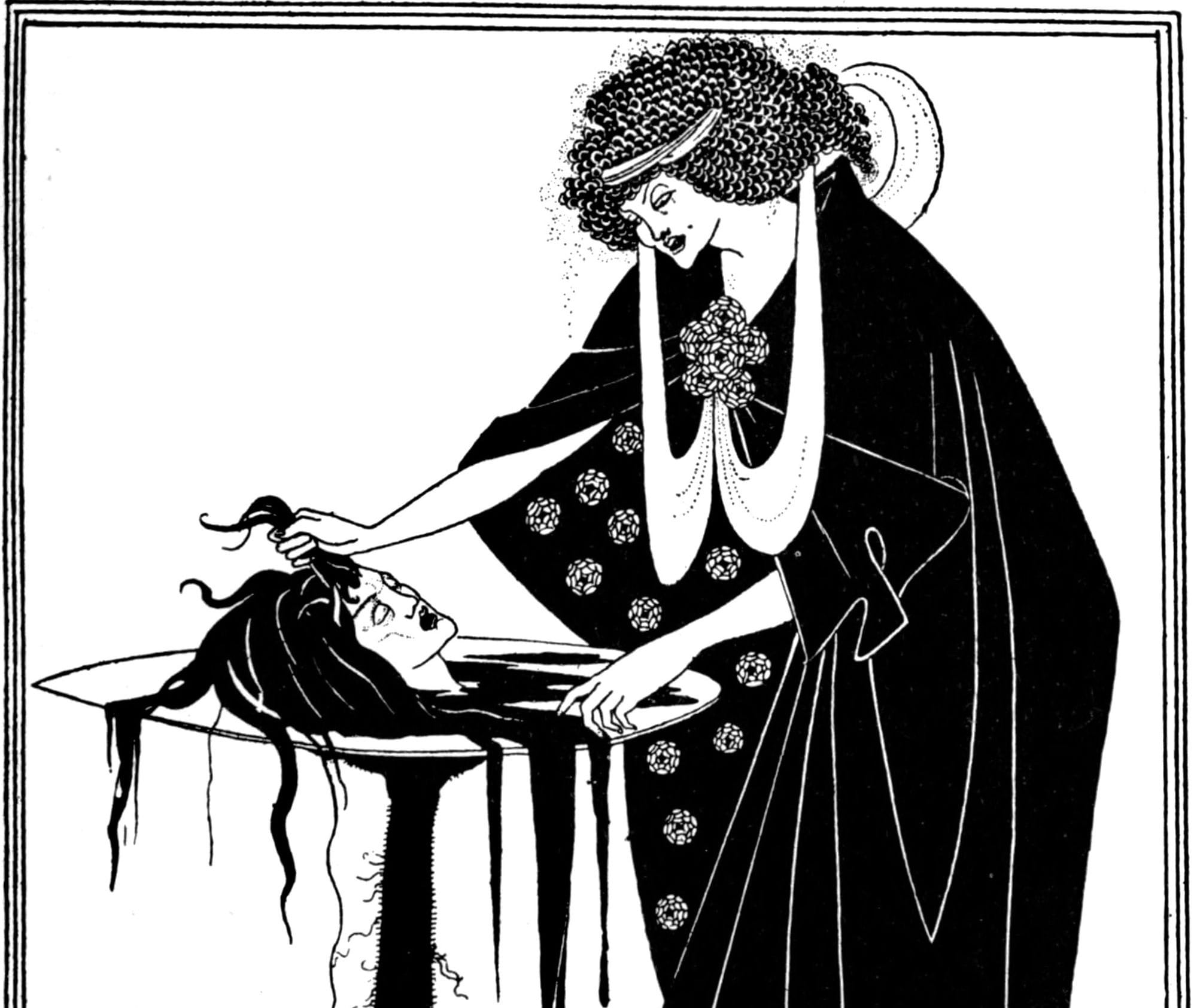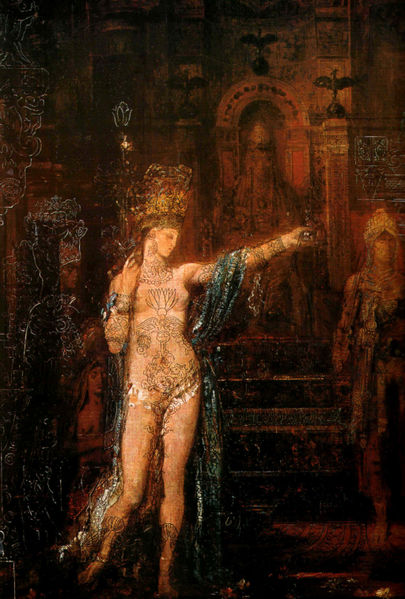Strauss' Salomé and Mozart's Idomeneo

More Severed Heads
Oscar Wilde died in 1900, but Max Reinhardt staged Wilde's Salomé in 1903 in Berlin to great acclaim, after which came Richard Strauss’ opera of 1905. It still plays to strong interest these days, for example the performances at New York’s Metropolitan Opera in early 2004 and September 2008.
Is it the sight of a troubled teenager serenading a severed head or the Dance of the Seven Veils striptease or gay undercurrent? The result is standing ovations, reinforcing the trend in opera of late towards shock value, curiously duplicating the events of a century ago. (Or even earlier if you count Donizetti chopping off the heads of Anne Boleyn (Anna Bolena) and Mary, Queen of Scots (Maria Stuarda) in the 1830s.)
The Met may have got the idea to restage Salomé from Berlin's Deutsche Oper, which staged Mozart's Idomeneo in 2003-2004 with no fewer than four severed heads. They aren't in Mozart's original story of course but in that newer version King Idomeneo staggers on stage next to the bloody severed heads of Buddha, Jesus, Poseidon and the Prophet Mohammed, which are sitting on chairs. It was the last of these heads that prompted the opera house to cancel a subsequent production in the Fall of 2006, concerned about the backlash from Muslims. Before eventually reinstating it, the heads made international news when they went missing from the opera house workshops. A spokesperson remarked, "The costume director and the technical director are having a look around, but if they don't turn up, we'll just make new ones..." PR doesn't get any better than this but the opera house is still struggling to stay alive.
The painting below of Salomé is by French Symbolist painter Gustave Moreau in 1871.

A severed head also puts in an appearance at the critical moment of Euripides' The Bacchae, another play that has been the subject of visionary (camped up) interpretations in the last decade.
The highlight of the play - and one of the reasons it could never be performed until late in the 19th century - when Nietzsche helped rehabilitate it - is that in the wildest scenes the women run amok sexually under the spell of Bacchus (Dionysus). This painting captures them at rest. Regrettably there are no famous paintings of the Bacchae in action (i.e.tearing animals apart in a sexual frenzy and murdering the King).
Similar scenes played out with Paul Hindemith's one-act opera Sancta Susanna which caused a scandal back in 1922 in Frankfurt. When it was performed again, in Stuttgart in 2024, it was described politely as "a nun discovering her sexuality," but one sensationalizing media outlet put it another way: "explicit lesbian sex scenes, real blood and injuries, and naked roller-skating nuns."

